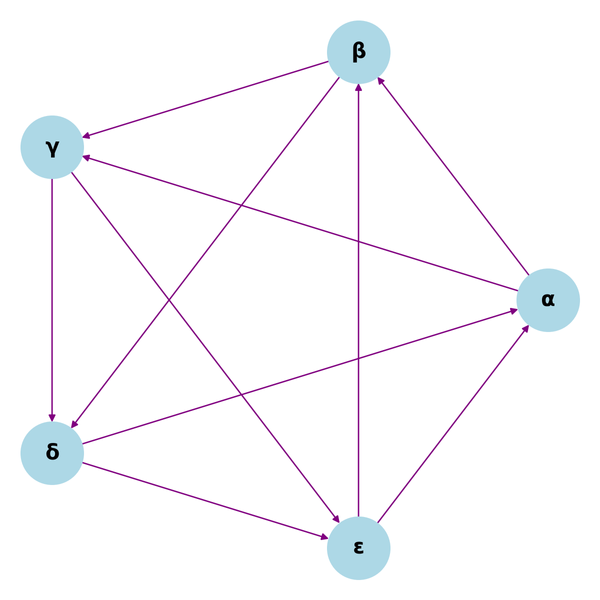How DeepSeek-R1 Surpasses OpenAI’s o1: The Surprising Key to Efficiency

Introduction
The development of Large Language Models (LLMs) has been driven by the need to optimize performance while maintaining computational efficiency. DeepSeek-R1, developed by DeepSeek-AI, has demonstrated state-of-the-art reasoning capabilities, surpassing OpenAI’s o1 series in multiple benchmarks. The key to its efficiency lies in its reinforcement learning pipeline, knowledge distillation techniques, structured reasoning, and inference optimizations.
This article provides an in-depth technical examination of DeepSeek-R1, covering its training methodologies, reinforcement learning strategies, efficient knowledge transfer via distillation, and computational optimizations. We also compare it against OpenAI’s o1 series models and analyze its superior performance on various benchmarks.
Training Methodology of DeepSeek-R1
DeepSeek-R1 employs a multi-stage training pipeline, ensuring both reasoning ability and computational efficiency. The training process consists of three key phases:
Supervised Pretraining with Large-Scale Data
DeepSeek-R1 begins with a large-scale pretraining phase, optimizing a standard causal language modeling (CLM) objective:
\[ L_{\text{CLM}} = -\sum_{t=1}^{T} \log P(y_t | y_{<t}, X) \]
Where:
- \( y_t \) is the predicted token at timestep \( t \).
- \( X \) represents the input sequence.
- The model learns via maximum likelihood estimation (MLE).
This pretraining stage is optimized for token efficiency, using deduplicated, high-quality datasets that minimize training redundancy.
Reinforcement Learning with Group Relative Policy Optimization (GRPO)
DeepSeek-R1 adopts a reinforcement learning approach known as Group Relative Policy Optimization (GRPO). This method optimizes reasoning capabilities without requiring a separate critic model, thus reducing training overhead.
Mathematical Formulation of GRPO
The reinforcement learning objective in DeepSeek-R1 is defined as:
\[ J_{\text{GRPO}}(\theta) = \mathbb{E}\left[\sum_{i=1}^{G} \min\left(\frac{\pi_\theta(o_i | q)}{\pi_{\theta_{\text{old}}}(o_i | q)} A_i, \ \text{clip}\left(\frac{\pi_\theta(o_i | q)}{\pi_{\theta_{\text{old}}}(o_i | q)}, 1-\epsilon, 1+\epsilon\right) A_i \right) - \beta D_{KL}(\pi_\theta || \pi_{\text{ref}}) \right] \]
Where:
- \( G \) is the group size for policy optimization.
- \( A_i \) represents the advantage function.
- \( D_{KL} \) regularizes divergence from a reference policy.
Why GRPO Matters?
- More stable training compared to PPO.
- Reduces hallucination rates by focusing on structured reasoning.
- Eliminates the need for critic models, reducing computational cost.
Knowledge Distillation for Efficient Model Scaling
DeepSeek-R1 uses multi-stage knowledge distillation to transfer knowledge from larger teacher models into smaller models without significant performance loss.
Distillation Techniques Used
-
Logit-Based Knowledge Distillation (Soft Targets)
- Instead of using hard labels, the model trains on soft probability distributions from the teacher.
- The KL-divergence loss used for distillation:
\[ L_{\text{distill}} = D_{KL}(\sigma(z_T / T) || \sigma(z_S / T)) \]
where \( T \) is the temperature parameter.
-
Attention Transfer
- The model aligns attention distributions between teacher and student:
\[ L_{\text{attn}} = \sum_{l=1}^{L} || A^T_l - A^S_l ||^2 \]
-
Feature-Based Distillation
- The intermediate hidden states are also matched:
\[ L_{\text{feat}} = \sum_{l=1}^{L} || h^T_l - h^S_l ||^2 \]
These techniques allow DeepSeek-R1 to efficiently scale while retaining its superior reasoning capabilities.
Performance Benchmarking: DeepSeek-R1 vs OpenAI o1
DeepSeek-R1 exhibits significant performance gains across multiple reasoning tasks.
Comparative Benchmark Results
| Benchmark | DeepSeek-R1 | OpenAI o1-mini | OpenAI o1-1217 |
|---|---|---|---|
| AIME 2024 (Pass@1) | 79.8% | 63.6% | 79.2% |
| MATH-500 (Pass@1) | 97.3% | 90.0% | 96.4% |
| Codeforces (Percentile) | 96.3% | 93.4% | 96.6% |
| GPQA Diamond (Pass@1) | 71.5% | 60.0% | 75.7% |
| LiveCodeBench (Pass@1) | 65.9% | 53.8% | 63.4% |
Computational Efficiency
- Lower Training Costs: DeepSeek-R1 achieves comparable performance at a lower compute budget.
- Memory Optimization: Utilizes quantization and structured pruning for inference efficiency.
- Adaptive Computation: Dynamic token generation reduces redundant computations.
\[ L_{\text{comp}} = \lambda \sum_{i=1}^{N} C_i \]
where \( C_i \) represents computation cost per token.
Key Technical Differentiators
| Feature | DeepSeek-R1 | OpenAI o1 |
|---|---|---|
| Reinforcement Learning | GRPO (No Critic Model) | PPO |
| Distillation | Multi-stage soft distillation | Limited distillation |
| Reasoning Structure | Explicit CoT formatting | Implicit |
| Computation Cost | Lower | Higher |
Future Directions
1. Expanding Multimodal Capabilities
- Integrating visual reasoning for tasks involving both text and image inputs.
2. Enhancing Software Engineering Applications
- Fine-tuning on larger RL datasets to enhance code-generation capabilities.
3. Improving Deployment Efficiency
- Optimizing tokenization and pruning for even faster inference speeds.
Conclusion
DeepSeek-R1 establishes itself as a superior reasoning model compared to OpenAI’s o1 by integrating:
- Reinforcement learning with GRPO, eliminating the need for critic models.
- Multi-stage knowledge distillation, enabling efficient scaling.
- Advanced structured reasoning techniques, reducing hallucinations.
- Lower compute overhead with adaptive computation techniques.
With better accuracy-to-parameter ratio, cost-effective training, and optimized inference strategies, DeepSeek-R1 represents the next evolution in efficient, high-performance LLMs.


